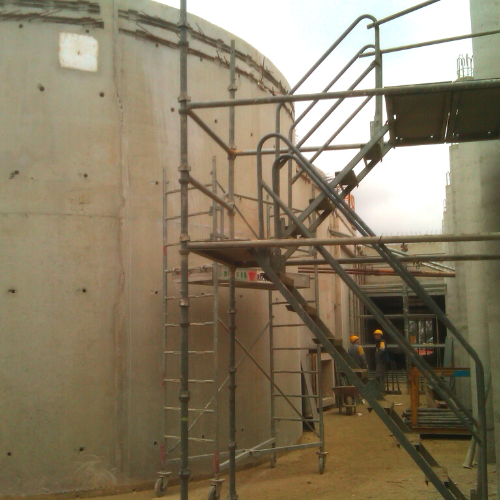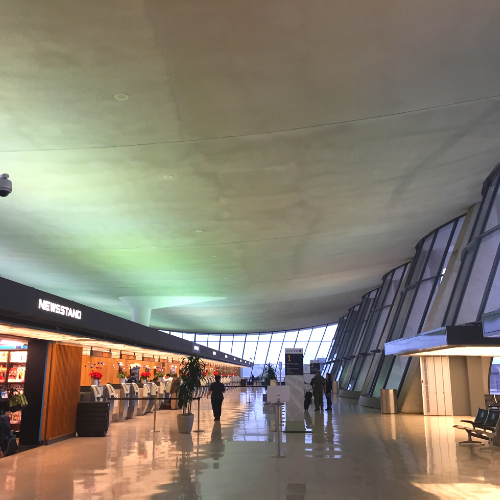Concrete has been used in architecture for thousands of years, with ancient civilizations like the Romans and Greeks creating impressive structures using this versatile material. Today, concrete continues to be an important material for architects and builders around the world.
In this post, we'll explore the history, applications, process, types of reinforcement, and finishes of concrete, as well as notable architects and buildings that are known for using it in their designs.
History of Concrete in Architecture
Concrete has been used in construction since ancient times, with the Romans and Greeks creating impressive structures like the Colosseum and the Parthenon. In the Middle Ages, Gothic cathedrals often incorporated concrete vaults and arches. In the 19th century, the development of reinforced concrete made it possible to create even larger and more complex concrete structures. In the 20th century, concrete became an important material for modernist architects like Le Corbusier and Frank Lloyd Wright.
Applications of Concrete in Architecture
Concrete is a popular material for tall buildings, bridges, dams, tunnels, and other large infrastructure projects, due to its strength and durability. In recent years, it has become increasingly popular as a material for residential construction, with many architects using it to create modern and minimalist homes.
The Process of Making Concrete
The process of making concrete involves mixing cement, water, and aggregate (such as sand, gravel, or crushed stone) in the correct proportions. The ratio of these ingredients can be adjusted to create different types of concrete with different properties. Once the concrete has been poured, it must be cured for several days or weeks, which involves keeping it moist and at a consistent temperature to allow it to harden properly.
Types of Reinforcement
Reinforcement is typically added to concrete in the form of steel bars or wire mesh. This helps to distribute loads more evenly across the structure and prevent cracking and other forms of damage. Precast concrete panels are made in a factory, where reinforcement is placed inside the panels before they are transported to the construction site. Post-tensioned concrete involves adding tension to steel cables after the concrete has been poured, which can make the structure more resilient.
Strength and Limitations of Concrete
Concrete has a compressive strength of several thousand pounds per square inch, making it one of the strongest building materials available. However, it is also relatively heavy and can be prone to cracking and other forms of damage over time. Proper maintenance and repair is essential to ensure the longevity of concrete structures.
Additives and Mixtures
There are many different additives and mixtures that can be used to alter the properties of concrete. Superplasticizers can be used to increase the workability of the concrete and make it easier to pour and shape. Fiber reinforcement can also be added to the mix to increase the strength and durability of the concrete.
The Future of Concrete in Architecture
Researchers are exploring ways to use recycled materials and reduce the carbon footprint of concrete production. Architects are also experimenting with new forms and designs that incorporate sustainable features like green roofs and passive heating and cooling.
Concrete Finishes and Colors
Concrete can be finished in a variety of ways to achieve different textures and colors. Stamped concrete can be made to look like stone or other materials, while polished concrete has a glossy, reflective surface. Concrete can be colored with pigments or acid stains to achieve a wide range of colors and patterns.
Notable Architects and Buildings that use Concrete:
Le Corbusier: Le Corbusier, a Swiss-French architect, is considered one of the pioneers of modern architecture. He used concrete extensively in his designs, and his iconic buildings like the Unité d'Habitation in Marseille and the Chapel of Notre Dame du Haut in Ronchamp, France, showcase the material's versatility and strength. His work inspired many architects around the world to experiment with concrete in new and innovative ways.
Tadao Ando: Japanese architect Tadao Ando is known for his minimalist and contemplative designs that often feature exposed concrete. He has won numerous awards for his work, including the Pritzker Prize, and his buildings like the Church of the Light in Osaka and the Museum of Wood in Hyogo, Japan, are admired for their simplicity and beauty.
Frank Lloyd Wright: American architect Frank Lloyd Wright is known for his organic architecture, which emphasizes the relationship between buildings and their natural surroundings. His designs often incorporate concrete, which he used to create unique textures and forms. Notable examples of his work include the Guggenheim Museum in New York City and the Ennis House in Los Angeles.
Oscar Niemeyer: Brazilian architect Oscar Niemeyer is famous for his use of curvilinear forms and sweeping concrete structures. His designs, like the Cathedral of Brasília and the National Congress of Brazil, are admired for their boldness and innovation.
Zaha Hadid: The late Zaha Hadid was a British-Iraqi architect who was known for her futuristic and otherworldly designs. She frequently used concrete to create dramatic forms and sculptural shapes. Her buildings, like the Heydar Aliyev Center in Baku, Azerbaijan, and the MAXXI Museum in Rome, Italy, are celebrated for their boldness and creativity.
Conclusion and Outlook on the Future of Concrete
Concrete is a material that has been used for centuries and continues to be an important part of modern architecture. Its strength and versatility make it ideal for a wide range of applications, from tall buildings to small homes. With the use of new technologies and sustainable practices, concrete is likely to remain an important material for architects and builders in the future. As more architects and designers explore the potential of concrete, we can expect to see new and innovative uses of this material in the years to come.
More Articles to read:
https://www.concretenetwork.com
The concrete that helps the climate - BBC Future
https://civiltoday.com/civil-engineering-materials/concrete/270-concrete-definition-components-types
https://gccassociation.org/sustainability-benefits-of-concrete/




